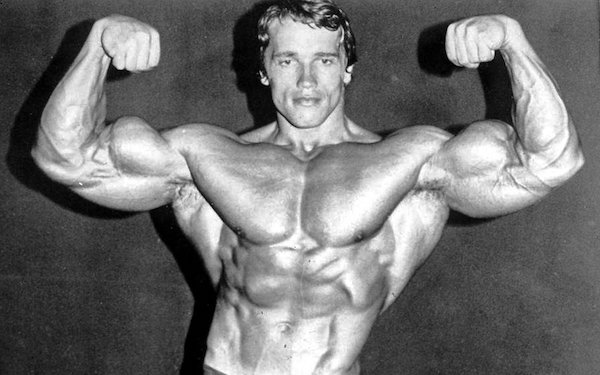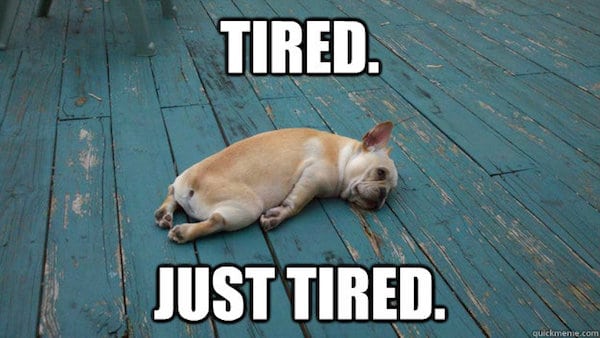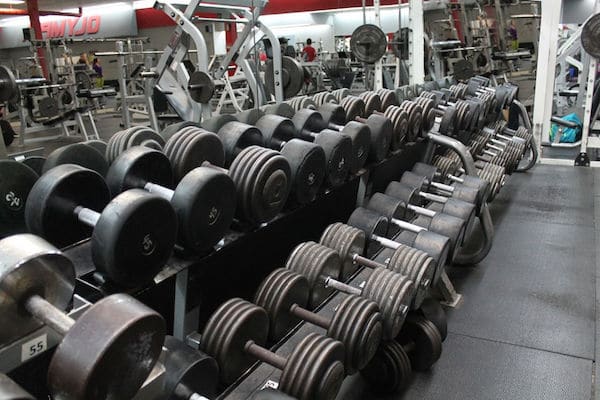No products in the cart.
How to Get A Perfect Workout : 19 Tips to Improve Workout Motivation

Is there such a thing as the perfect work out? Yes, but there is not a ‘one size fits all’ approach and every individual has a variety of different training needs.
In the following article, we will discuss goal setting, work out planning, how to avoid distractions, techniques for remaining focussed, the importance of sleep and tips to get the most out of your workouts.[toc]
Essential Tips for a Perfect Workout
If you want to stay on track with your physique goals; you really need to ensure that you are mentally focused and that your brain is switched onto the challenges that lay ahead.
Many of the top bodybuilders, use the following three psychological techniques to help them to remain motivated throughout their training regimes:
- A positive attitude
- Visualisation and imagery
- A warrior mindset
#1: A positive mental attitude (PMA)
When beginning your weight training program your outlook is usually positive. You tend to believe that you will gain muscle and this is a springboard for you to start training.
However, this scenario can be very difficult to sustain if you are generally a negative person or if you don’t mentally apply yourself to keep positive.
Strength training does come with some setbacks and you will have times in your regime that progress is not easily identified.
For a negative individual, this scenario will be deemed as a major setback; they will think that their goals are unobtainable and will more often than not ‘quit’.
On the other hand, a positive individual will identify any setback as a learning curve, will bounce back stronger and will adjust their training techniques to achieve their goals.
In a nutshell, they will always find ways around setbacks whilst keeping focused via a positive outlook.
Everyone wants to achieve their weight training goals and whether you buy into this PMA philosophy or not is entirely up to you!
The way that we think and perceive situations are 90% by habit and via our past experiences. These two factors are crucial in developing a positive mindset.
It’s sometimes the easier option to be negative and use our bad past experiences to form a negative outlook on our training.
This approach and mentality may lead to very limited success with your training goals. However, let us not mix this up with having a bad day. We have all had a bad day sometimes in and out of the gym!
Practice thinking about your weight training goals and believe that you can achieve them. If any negative thoughts start to creep into your mind, stop and think about where these thoughts have led you previously.
Also, think about where these negative thoughts will lead you in the future and try to reset your mind into thinking positively.
A key point to remember is that thinking negatively is a ‘coping mechanism’ to help you deal with limited success in the past.
Override it a.s.a.p. as it is a massive barrier that will stop you from accomplishing your training goals.
Remember a ‘can do’ positive approach will stand you in very good stead throughout life and will help you to conquer all of your training goals.
#2: Visualisation and Imagery

Visualise yourself with the physique that you will have after you accomplish your training goals. You should think about your new physique often and place it at the forefront of your mindset.
Recall these images on a regular basis and this will help you to keep focused on your predetermined goals. This will make all of the hard work and effort worthwhile and will be a constant positive reminder of why you want to carry on weight training.
Another strategy is to choose a picture of someone who has a similar ‘physique’ that you are wanting to achieve. Place this photo somewhere that you can see it every day.
Many weight trainers or bodybuilders take weekly pictures of their body changes and this again is an excellent reflective tool to use, to gauge success!
A short term approach is to visualise yourself performing the actual work out routine. Concentrate on your posture, actual technique, breathing, number of reps per set and rest intervals.
Also determine how the dumbbell feels in your hand, feel how your muscles burn when you perform the exercises and block everything else out. This will help you to prepare for the workout and will vastly improve your form.
During the session visualise yourself performing the exercises prior to lifting the weights and refocus your mind during the rest intervals.
This strategy will stop your mind from drifting and will keep you on task during the workouts. The end product will be a more productive, quicker and effective session.
#3: The Mindset of a Warrior
If executed correctly a workout should last no longer than an hour. The key to this is to avoid all of the social distractions and to focus solely on your physique goals.
If you were a gladiator entering into a ring ‘would you really care about the hot chick in row X?’ No, and if you did you would soon be seeing stars or not long for this world.
Therefore, your main priorities should be gaining muscle mass with maximal effort and intensity within a limited timeframe.
To build mass you need to control the controllables. This includes developing a solid focus when you step into the gym arena. Zone out all of the distractions and concentrate solely on yourself for that hour.
During this self-absorbed approach think about the following:
- Your muscles that you are working
- Visualise the techniques for each exercise
- Think about your training goals
- Visualise your desired physique
- Keep reminding yourself why you are training so hard
- Concentrate on your form, your breathing
- Enjoy the pump and during the rest intervals visualise the next set of exercises
It is all about you for an hour. Enjoy your time training and you will start to see the results in muscle gains a lot quicker.
Reasons Why You Had a Bad Workout?
You know the feeling, you’ve just left the gym and you feel frustrated. Normally when you walk out of there you are on a slight endorphin high, you’ve worked hard and your muscles have got that pump that lasts all of 40 seconds, by the time you reach your car it has gone, but you don’t care.
But today nothing went well, you were tired, had low levels of energy. You were irritable and listening to the guys around you only irritated you further.
None of your lifts was anywhere near their usual levels and from the moment you got in you were clock-watching, waiting for the minimum time that you had to be there for before you could leave.
But what were the reasons why? Was it just one of those sessions? Or could there be some underlying issues that you can address?
The following are some common reasons why you had a bad workout, and how you can fix them:
Reason #1: You Need More Sleep
Sleep is the easiest way to improve your workout performance, just lie in bed with your eyes closed!
Multiple studies have shown that increased sleep leads to raised growth hormone levels [1], whilst a bad night sleep can lower testosterone [2].
Having higher levels of growth hormone and testosterone will improve your strength and training levels.
Another reason to sleep is that it has been shown that sleeping more than average can improve your mood and athletic performance.
A 2008 study found that Collegiate swimmers improved their performance when given an extended sleeping time [3].
So if you have had a bad workout then it could possibly be down to a lack of sleep (whether quantity or quality).
If you have had a bad night’s rest then supplementing with caffeine is a good short term solution. Multiple nights of bad sleep will not be fixed by caffeine, but if it is a one-off scenario then caffeine can temporarily mask the effects of fatigue.
A 2012 study by Cook et al found that elite athletes with minor-sleep deprivation were able to outperform the placebo group when they supplemented with high levels of caffeine [4].
Reason #2. You Train At A Different Time To Usual

On a similar note to point 1, training at a different time to when you usually train can also affect your performance.
If you have ever heard of Circadian Rhythms you will already be aware of this, but your body is constantly fluctuating throughout the day. Sometimes you will have more energy and sometimes less.
For men, training around mid-afternoon is supposed to be optimal for performance. But with the way that your body adapts to training, whatever time you usually train will soon become the time that your body performs best at.
Changing times can result in a low-energy workout. Interestingly caffeine can again be the solution as studies have shown that it reverses the reduction in power [5].
Reason #3. Your Pre-workout Nutrition Was Poor
Without going into muscle protein synthesis and its effect on performance, you need protein (and carbs) in your system before you train.
Anyone who is still training ‘fasted‘ in the belief that it will help them lose more fat is deluded.
Brad Schoenfeld addressed this in his journal article “Does cardio after an overnight fast maximise fat loss?” [6]. Not only does it not do this but the session itself will be poorer due to the lack of energy.
Pre-workout and post-workout nutrition is simple. Try to consume a meal (Breakfast or lunch) at least an hour prior to training. You should then consume a meal around one hour afterwards (Lunch or Dinner).
If you can’t get a meal in, as you are training before breakfast or after dinner then make sure you are at least consuming a high-protein snack or shake.
As mentioned above, consuming caffeine pre-workout can also improve your session quality.
Reason #4. You Are Overtraining
Some fitness ‘experts‘ claim that there is no such thing as overtraining, but this is obviously not true.
Taking it to an extreme, if you trained for 24 hours straight for 5 days in a row you would have overtrained! Obviously, this is not what they mean, rather they claim that most people are not in danger of overtraining.
On this point, they are probably correct. But overtraining does exist and it can affect anyone who is training for too long, or too often.
If you are experiencing chronic fatigue (tired all of the time), lower strength levels (not performing as well in the gym as you were a month ago), keep getting ill, or are suffering from depression then you might be overtraining.
Don’t jump to this conclusion after one bad workout. But keep it in mind if one bad workout leads into another and another after that.
Give yourself a break from the gym. Take a week off and you should come back stronger.
Then look at managing your training so that you get a break every now and again. If the thought of this is stressing you out, then speak to a doctor.
Tips to Improve Workout Motivation
To get your desired physique takes a huge amount of dedication and at times you will be sore, you are going to sweat and work extremely hard.
Remember Rome wasn’t built in a day and if you want to achieve your training goals, then you have to put the time in and stick to your workout program.
Longevity is the key to success and be able to perform your workouts on a daily, monthly and sometimes annual basis is a major part of the training process. Having the right balance of training hard, not overtraining and be consistent is paramount to your work-out program adherence.
Training smart is very important and you should ensure that you are as keen at the end of the weight training program as you were at the beginning.
At the start of the training program, many individuals are enthusiastic and sometimes as you progress through the schedule excuses, errands, social and work commitments start to stall your progress.
Consequently, people start to miss one session, then this progresses to two sessions and then before you know it you are attending far less. Your dream physique then starts to fade away!
However, all is not lost. By following these key strategies discussed during this article will definitely help you stick to your workout program, remain focused and help you to achieve your training goals.
#1: Start Training At A Hardcore Gym

While you are in your comfort zone in your local gym, a change of scenery may be in order so that you re-connect back with your training mojo. A good solution is to invest in a two-week pass at a hardcore gym where some real meatheads workouts.
Every town and city has this type of gym. It may be out of your way in terms of distance and you might feel a little intimidated to begin with.
Nevertheless, you will be surprised at how much you will learn in a short space of time, by immersing yourself in a real hardcore gym culture. This can be quickly established by feeding off the energy whilst using the new equipment and observing new training techniques that you never knew existed.
In a hardcore gym, there is inevitably a huge amount of ‘testosterone’ flying around and this is a major catalyst for buzzing and feeding off each other when training.
Seeing some of the amazing physiques that others have will motivate you to push yourself further and harder when training. Before you know it your 2-week pass will become a lifetime membership because you have rekindled your training vibe and you feel at home in this environment.
#2: Keep A Log
If you keep a log of what you are currently lifting you can then look back when you have lost a little motivation to see just how far you have come.
Seeing your progress in black and white is a good motivator.
You should also write down what you are eating too. So that you know how certain foods will affect you in different ways.
#3: Keep Your Gym Kit Near Your Bed
If you keep your gym kit out and near your bed. It can serve as a reminder that you need to work out.
One thing I must say is that it is best that this kit is clean as if you leave sweaty clothes instead this may have the opposite effect.
#4: Get Inspiration From Others
No doubt you had someone’s physique as an inspiration to start working out. Perhaps it is time to revisit some of the images and videos to get you back in the mood.
These days with so much content available for free there should not be a shortage of inspiration.
‘Birds of a feather do flock together!’ Therefore try to immerse yourself with friends who train hard and eat clean. This positive influence will keep you motivated and on the right pathway towards your training goals.
Try to set the bar high with the friends that you hang around with and be very selective as this will reap its rewards in the long term.
For example, a good friend is often a good role model and inadvertently you will copy their positive behaviour. More often than not you will subconsciously use this as a motivational tool and negative dips in your training and eating habits are less prevalent.
#5: Join An Online Fitness Community
If you think that you are the only person who is lacking motivation then you would be wrong.
There will be tens of thousands of people looking to gain muscle and strength and to think that they all remain motivated 100% of the time would be a little naive.
If you are lacking motivation then I suggest that you join an online fitness community. There are tons available on social networks like FaceBook, or you could try Bodyspace (a free app from Bodybuilding.com) too.
With these communities, you can chat with like-minded individuals, get advice and regain your lost motivation.
#6: Take Part In A Challenge

A little competition can be a good short-term motivator as you know that you will need to train in order to compete.
No one wants to fail and to look stupid. So this will make you work that much harder in the gym.
#7: Workout With A Friend
Again research has highlighted the importance of social support and its positive influence on you sticking to your work out plan.
A work out partner can keep you accountable before, during and after the gym.
Working out with a friend can provide you with a little competition as you will both want to be seen as the Alpha.
Even if you are not competitive you can both motivate each other. Often it is just enough to hear someone telling you to “come on” or “just 2 more” to get your motivation back.
You can also lift heavier with someone who is willing to ‘spot you’. Sometimes there is no one available, and you don’t want to go dropping those weights on yourself.
A word of caution when choosing a training buddy. Always ensure that you are on a similar fitness or strength level. This is because you want to be training at the same intensity and not playing catch up. If you are a beginner, this is especially important in preventing injuries.
Another approach is to hire a personal trainer. Many individuals believe that having a personal trainer is the main reason why they have stayed on track with their training program.
A personal trainer should continuously challenge you and keep the pot boiling in terms of freshening up the training program.
One of the most common reasons for dropping out of a training program is boredom and lack of challenge. This can be avoided from the outset by proper planning and by using a realistic goal setting approach with your PT.
#8: Keep Hydrated
Keeping hydrated plays a major role in the perfect work out! Think about this, your muscles are made up of around 75% water and if your hydration levels drop below 10-15% then there is a massive reduction in athletic performance [7].
Therefore, if you are not fully hydrated, your lifting will be hampered and there will be a reduction in your muscle mass gains.
This reduction in performance can be coupled with symptoms of fatigue, headaches, gastric issues and constipation. Hence, if you are ill because of these dehydration symptoms then you could miss the next training session. This is very bad news if you are on a tight training schedule!
A simple remedy is to drink at least 1 gallon of water on a daily basis. This will help to flush out all the toxins in your body and keep your vital organs functioning properly e.g. the brain is made up of 80% water.
This concept will help you with training focus and boost concentration levels during your sessions. Aim to drink at least 2 pints an hour before you start training and 2 pints after the training session.
#9: Meal Timings
The meal timings are important in you achieving your perfect work out. There is nothing worse when you feel flat during your work out because your blood sugars are too low or you are feeling bloated.
This happens because you have got your meal timings all wrong.
Many bodybuilders try to consume at least 6 meals a day which includes three main meals and snacks.
This is important to ensure that you getting enough of the right calories throughout the day and that your body is an anabolic state.
Remember that you need to consume more calories than you expend, and pre & post work out meals are also vital in this process.
You should eat your pre-workout meal at least 2 hours before training. This will allow enough time for your food to digest, making the nutrients readily available. Doing so should eradicate any bloating or discomfort you may experience otherwise.
The meal should be high in protein and complex carbs, as this will fuel your body making it ready for lifting. It will also enhance the availability of the essential amino acids during and after the session.
After you have finished training, you have a 45-minute‘ window’ of opportunity to start eating. This will enable you to have the best results in terms of muscle gains.
Immediately after your workout, the muscle is like a sponge ready to absorb all of the nutrients which help with recovery and restoring the glycogen levels.
During this ‘window’ you really want to facilitate a spike in your insulin levels. As this provides the transport to drive the amino acids in the exhausted muscle.
This will massively help with muscle growth and whey protein combined with a fast acting carb is perfect for this post-exercise.
Within 2 hours of stopping training, eat the main meal that incorporates whole wheat pasta, brown rice or oats.
A key point to remember is that not all carbs are bad. Especially if you are trying to build muscle mass.
#10: Have A Clear Vision
Every time that you strut into the gym, you should have a clear goal and a picture in your mind, how you are going to achieve it.
Always bear in mind the bigger picture in terms of your goals. Having more defined abs, losing 12 pounds of body fat or the bodybuilding competition that is 12 weeks away. These long term goals are very important but so are the short term goals.
These short term goals should be easy for you to do in the training session.
For example, adding 5 pounds to the barbell squat and/or introducing sprint Tabata at the end of the work out to burn more fat etc.
The session goals will start to add up, and the end product will be you conquering all of your ultimate training goals.
Remember that you must be prepared to conquer all of the goals that you have set, and this can only be accomplished by you knuckling down and keeping your focus every session!
#11: Choose The Right Time Of Day To Train

Choose a time a day that best suits you, and dedicate this time to you achieving all of your ultimate strength training goals.
Leave all of the ‘negative work and life baggage’ at the door before you enter the gym.
Worrying about the events of the day can have a negative impact on your training regime, and fitness goals should now be at the top of the agenda.
A key point is that exercise, in general, is a stress buster. Evaluating what time that you have the most energy and enthusiasm throughout the day, will help you to keep focused.
A good example of this is training in the morning before work. As many people feel that their minds are clearer and they can dedicate more energy/focus to the session.
In addition, you could have total focus during the morning training session because the events in the day ahead have not interfered with your mojo!
#12: Having The Correct Plan To Suit Your Lifestyle Needs
In a nutshell, many people quit or fall by the wayside because the plan that they are following does not take into consideration their lifestyle needs.
In other words, they are setting themselves up to fail due to poor planning.
To prevent this from happening the following factors should be considered:
- Family commitments
- Work commitments
- Sleep patterns
- Best time and availability for exercise
Once you have answered the above questions accurately, only then can you then start to gauge and plan a model of exercise which incorporates your lifestyle commitments and needs.
A key point to remember is that many people tend to ‘burn out’ from exhaustion in the first few weeks, or miss sessions due to fatigue and/or unscheduled commitments.
Recovery days are pivotal for your muscle growth, increasing your fitness levels and preventing you from dropping out.
Bear in mind that ‘proper prior planning prevents poor performance’ or in this case will help you to keep on track with your fitness plan.
#13: Create A Music Playlist That Suits The Purpose Of The Workout
Zoning into the work out can be achieved by listening to music on your phone or MP3 player whilst you train hard.
Creating the right playlist is an important part of the training process and the tempo of the songs should match your training intensity.
Research has indicated that there is a strong relationship between music tempo and exercise intensity in a workout [8]. The fast tempo group during the research experienced a higher intensity work rate when compared to the slower tempo group.
In addition, music helps you to take your mind off the task at hand and uplifts your mood. Individuals who listen to music, exercise for significantly longer periods of time and inevitably complete the entire work out.
Music is an excellent blocker of social noise. So why not give it a try and see your fitness and muscle gains improve significantly.
Bear in mind, that we are not performing yoga. So skip anything that doesn’t have the right beat and lyrics to make you feel like you are a ‘training machine’.
The right music will give you that extra kick during the session. Focus on the beat and pump out of the weights in rhythm to the song. This positive approach will keep you in the ‘zone’ and will make you train harder with a real purpose.
#14: Focus On Your Form

Keeping focused on your form whilst pumping out the weights, will prevent you from being injured in the near future.
This technique will also stop any of the distractions around you in the gym.
You should be able to execute all of the exercises with perfect form before you increase the exercise intensity. If you increase the exercise intensity before mastering the technique, then injuries will definitely be on the cards.
A good strategy in avoiding these unwanted injuries is to mentally connect with the muscles when executing the exercises. Try to feel the muscles working through the whole range of movement. This may sound a bit extreme but it really does work!
As mentioned previously, by focusing on your technique will eradicate any distractions in the gym. Allowing you to concentrate on you and your goals.
Use the mirrors in the gym to check your training form. Not only to evaluate your session progress but also to motivate you to train with more vigour.
Ignore everyone else who you can see in the mirror; “are you really bothered about Joe Bloggs next to you in the gym?” Well, you shouldn’t be…….
#15: Have A Workout Plan
If you don’t have a mapped out training plan when you walk into the gym, you will be wasting a lot of time and this could be a catalyst for distraction.
Have a program that incorporates the machines that you are using, the exact weights for each exercise, the time performing the exercises, the rest intervals and the tempo of the exercise.
This work out strategy will add some real purpose to your workouts. Allowing you to move with more fluency in between the exercises.
A deliberate and planned training approach will boost your concentration levels. Keeping you focused on conquering your short and long terms goals.
Also add some training overload into your sessions, as this triggers muscle growth via systematic planning.
#16: Capture Your Progress With A Photo
Before you begin your journey ensure that you take a photo of yourself in a pair of board shorts or speedos – your choice!
These photos maybe some of the most important you take when training as they will show you how far you have come on your journey. It is this starting or baseline point that can be used as a constant reminder and source of inspiration.
A good strategy is to take a photo every 2 weeks and to stack it next to one another with your first day picture as the starting point. You will be surprised how effective this photo timeline can be.
It will emphasise the fact that your hard work in the gym and kitchen is paying dividends.
When you are feeling low take a look at the photo on day one, as this will give you a real lift and try to focus on how much you have progressed and the amount of hard work that it has taken to get you there.
This should remind you how much you have moved forwards.
For additional support why not upload your photos to a website such as ‘Bodyspace’, where you can fully detail your journey.
#17: Use The Power Of Smaller Goals
It is very important to have long term goals. However, these need to be broken down into easier to manage chunks along the way.
Setting smaller or short term goals ensures that you are not biting off more than you can chew in one go. It also keeps you on track for your long term goals.
Realistically by achieving these micro-goals is an important method of driving you towards the bigger goal because you have won the mini battles along the way!
A good nutritional micro-goal is for you to prepare all of your week’s meals in one hit as this helps you to avoid temptation throughout the week. This strategy will keep you on track and should stop you from preparing a quick ready meal and/or jumping ship when dips start to appear in your motivation.
Once you have got making the meals in one hit of preparation in the kitchen down to a fine art. Then you can start to tweak your macros so that they meet your longer-term goals.
For example, reducing the number of carbs and increase the amounts of essential fatty acids in the meal content.
#18: Eliminate Notions Of The ‘All Or Nothing’ Variety!
If you have success or failure and/or black or white trails of thought these can actually be counterproductive and set you up for a ‘big fall’.
Try to adopt a more balanced mindset. This approach is more beneficial and sustainable when aiming to achieve your physique goals.
For example, you could stop thinking that you can only eat brown rice and grilled chicken with any deviation from that nutrition plan is a total failure.
A more balanced approach would be to consider that you are making big strides in the right direction in terms of adopting a sustainable, healthy and long term eating plan.
Therefore a healthy balance will help with a smoother transition in terms of your physique goals.
When you are tweaking and adjusting your nutritional plan. A key point to remember is that longevity is absolutely vital in relation to success. Everyone is totally different and what works for them might not have the same impact on you.
If you can’t envisage these changes being long term then a tweak is on the cards. Embracing a balanced approach will keep you happier, a lot more enthusiastic and inspired.
In a nutshell, your training and nutrition will become more robust and this equates to higher motivation levels and achievable physique goals.
#19: Supplements
There are some key supplements to help you to create the perfect workout and to keep you on track with your muscle mass goals.
The first supplement I would suggest is whey protein. Protein is incredibly important as you no doubt know already.
You may be getting enough protein in your diet through your diet alone. However, consuming a protein shake can make the process easier.
Next, I would suggest looking at BCAAs like arginine, leucine, glutamine and l-carnitine.
Arginine is an amino acid that plays a vital role in cell division, removing ammonia from the body, immune function, hormone release, nitrate oxide synthesis, tissue growth and repair.
It has the ability to produce nitric oxide through vasodilation of the blood vessels. It is this mechanism that helps with an increase in nutrient delivery to the muscles. Ultimately this process aids muscle growth and repair.
L-arginine increases carnosine levels in the muscle. The primary function of this amino acid is to buffer the hydrogen ions produced during working outs. This is achieved by neutralising the hydrogen ions which then allows you to pump iron harder for longer [9].
Add about 8g of L-arginine supplements into your diet plan, as this will definitely reduce your fatigue levels.
Leucine has anabolic properties and is a very important branched-chain amino acid. It helps to regulate protein synthesis by activating the mTOR pathway [10][11].
This pathway is very sensitive to levels of leucine and reduced levels signal to the mTOR that there is not enough protein in the body, to create new muscle and is deactivated.
Conversely, high or adequate levels of leucine cause the activation of the mTOR pathway; resulting in the creation of new muscle tissue. The RDA for leucine for men who are resistance training is between 1.5-2.5grams.
Glutamine is the most common amino acid found in the body; its main roles are protein metabolism, transporting nitrogen into the muscle, increasing cell size, maintaining a healthy immune system, intestine health and anti-catabolism [12][13].
This anti-catabolism ability prevents muscle break down by counteracting the acidosis of anaerobic exercise, and the body uses the glutamine from the muscle to facilitate this.
Glutamine also helps with human growth hormone secretion (HGH); this helps with fat metabolism and supports new muscle growth.
After an intense training session, glutamine is hugely depleted in the body which may impact strength, stamina and recovery.
To replenish glutamine levels after an intense session could take up to 5 days. This, therefore, this may impact protein synthesis, slow down muscle growth and increase muscle breakdown.
A suggestion is that you should take between 10-15 grams of L-glutamine in your diet. This is usually consumed within the protein shake formula but is available in tablet form.
L-carnitine is made in the body from the amino acids lysine and methionine. It plays a vital role in fat metabolism and 98% of carnitine is stored in the skeletal muscle.
L-carnitine is an essential amino acid which is needed for long-chain fatty acid transportation, skeletal muscle contraction, regulation of protein balance and helps to use triglycerides as its primary fuel source.
Although health and athletic benefits of carnitine were unsubstantiated, a recent study in the Journal of Physiology [14] stated the following advantages:
- Speeds up the recovery from intense exercise and prevents oxidative stress
- Increased fat transport to cells, fat burning efficiency and energy
- Decreased visceral fat by increasing triglyceride and LDL cholesterol burning
- Quicker recovery time from exercise due to less pain, more energized, produce less and deplete lactate acid quicker
- May boost testosterone
Therefore, L-carnitine may enable you to pump a higher %1RM and more reps. The RDA is 2g of supplementation to help with your training schedule.
I would also highly recommend taking a pre-workout before a workout too. They are designed to give you that little extra energy while you exercise.
In Conclusion
Remember that your time in the gym is precious and should be used wisely! Therefore, let’s stop the idle chit chat, cut out all of the distractions and switch on!
You need to utilise your time at the gym effectively and being in the zone is essential to you achieving your strength training goals.
This requires you to concentrate solely on yourself. ‘Zone in’ on the exercises regime ahead, and to ignore or block out any unwanted distractions.
Save
